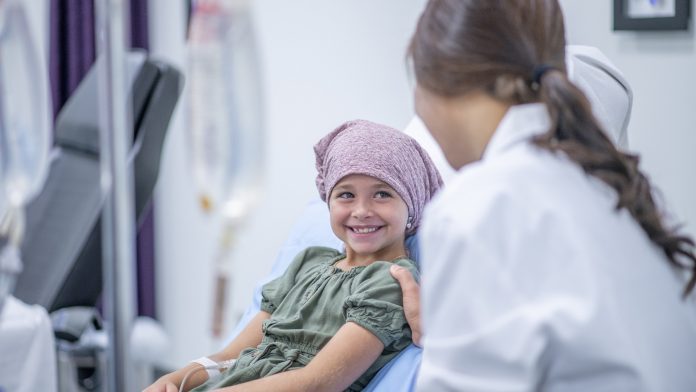
Researchers in Sweden have found a drug that can cure neuroblastoma in mice, paving the way for clinical trials in humans.
Neuroblastoma is a rare type of cancer affecting mostly babies and young children. It develops from specialised nerve cells (neuroblasts) left behind from a baby’s development in the womb. Statistics show that around 100 children in the UK are affected each year, and common symptoms include a lump in the neck, breathlessness, and fatigue.
Treatments for neuroblastoma include surgery, chemotherapy, radiotherapy, high-dose chemotherapy followed by a stem transplant, and immunotherapy. Now, researchers from Karolinska Institutet have found that DHODH blockers, which are well-tolerated in humans, can cure neuroblastoma in mice if administered in combinations with chemotherapy.
The study is published in JCI Insight.
Curing neuroblastoma with a new treatment
When the researchers combined DHODH blockers with chemotherapy already used for children with neuroblastoma, they could cure the mice with the aggressive disease.
“This combination therapy should be tested clinically as it has the potential to improve survival in children with neuroblastoma,” said Ninib Baryawno, senior researcher at the Department of Women’s and Children’s Health at Karolinska Institutet and one of the study’s corresponding authors. “This is sorely needed since the chances of survival on relapse are unfortunately small with current treatments.”
The research was a collaboration with researchers at the Massachusetts General Hospital and the Harvard Stem Cell Institute in the USA. David Sykes, one of the senior authors in Boston, commented: “This is an exciting finding with the real potential to help patients. It also highlights the importance of international collaboration.”
The researchers analysed patient data from over 600 children with neuroblastoma and revealed that tumours with high levels of DHODH are more aggressive and deadly. They then treated cell cultures and mice with a specific DHODH blocker called Brequinar.
Analysing the gene expression in tumours
The researchers analysed the gene expression in the tumours and revealed that Brequinar reduces the activity of the MYCN gene, one of the drivers of tumour growth. However, the researchers found once treatment was withdrawn, the tumours began to grow again. This led to the researchers combining Brequinar with chemotherapy, which proved as a successful method of treating neuroblastoma.
“Neuroblastoma is a disease that begins very early in development, even at the fetal stage,” commented joint first author Thale Kristin Olsen, a researcher at the Department of Women’s and Children’s Health at Karolinska Institutet, and the Department of Immunology, Genetics and Pathology, Uppsala University. “The next step of our research is to find out why the DHODH protein is so critical to tumour growth.”









